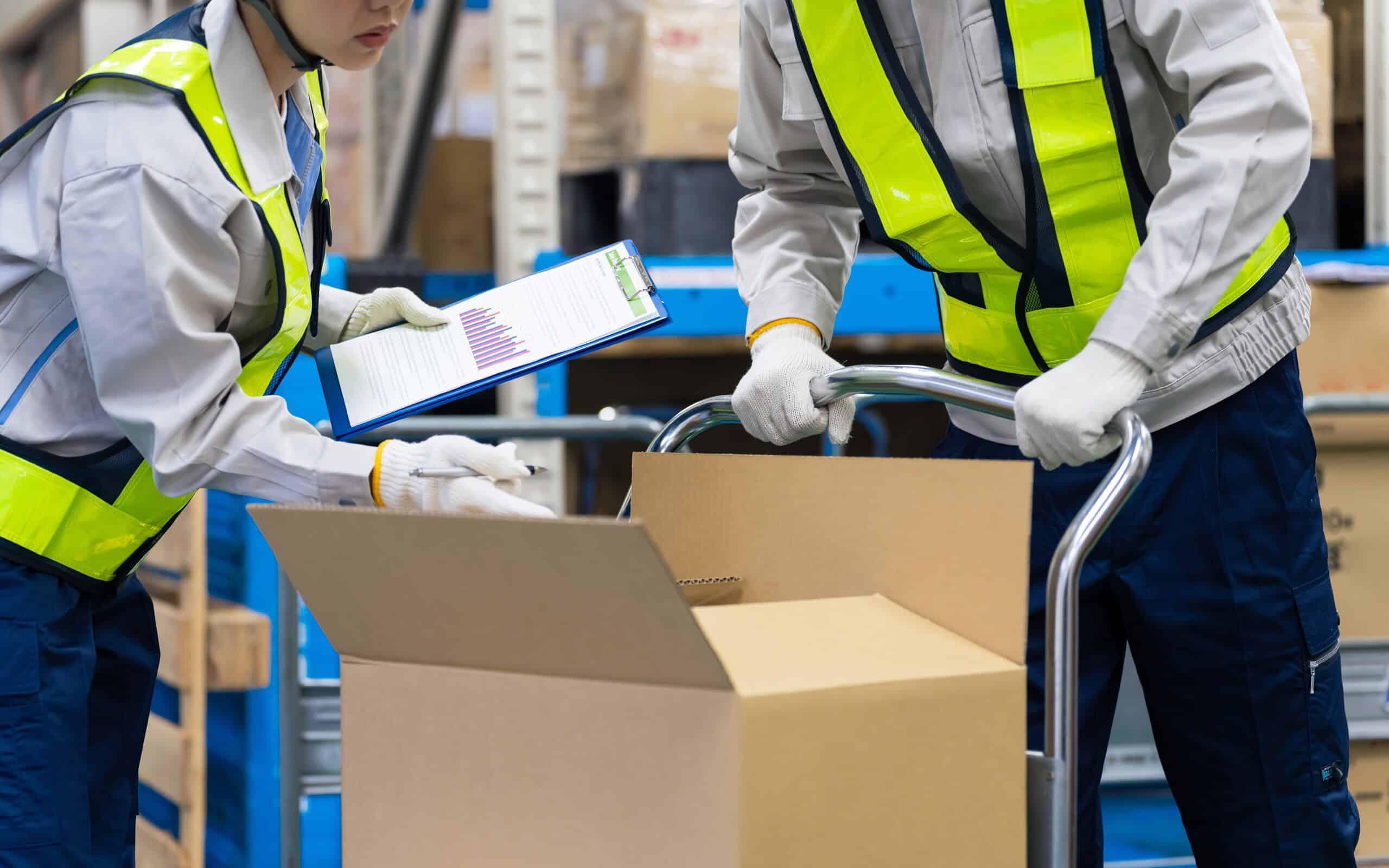
Key Points
- IGI is a handy way of reducing waste in your production line.
- Incoming goods inspections are a great way of maintaining customer trust.
- It can be time-consuming, but it is worth the investment to implement them.
The incoming goods inspection (IGI) is a part of Lean Six Sigma’s (LSS) process improvement methodology. Originally designed as a quality check for incoming materials and products before they were processed by the company, it has since been found to have other significant uses. For example, it can be used to identify problems in processes that lead to defects or non-compliance with specifications. It can also reduce setup times and improve production rates.
However, these types of inspections are not easy to implement. Mistakes can be costly, therefore the pros and cons must be thoroughly weighed before attempting to move forward.
Overview: What Is an Incoming Goods Inspection?

Incoming inspections are a quality control process used to check incoming materials and products for compliance with specifications. The process involves examining the items as they come in, identifying any problems or defects, and taking steps to correct them before further processing takes place. It can be used as part of LSS’s overall process improvement strategy, but it can also be implemented independently of LSS.
3 Drawbacks Associated with Incoming Goods Inspection
1. Time-consuming
The process of inspecting incoming goods can be time-consuming, especially if there are a lot of items to inspect. This can delay the shipment of goods and cause problems for businesses that rely on timely delivery. It also requires good coordination between different teams to ensure that the inspection is carried out quickly and efficiently. Any delays in the inspection process can cause problems for the rest of the supply chain.
2. Error-prone
Inspecting incoming goods is often a manual process, which means it’s susceptible to human error. And when you’re dealing with complex imports such as food products that need to be checked for microbes and chemicals, or electrical equipment that may have faulty circuit boards inside it, these errors can be quite costly.
3. Expensive
The cost of incoming goods inspection can be quite expensive, especially for larger companies that rely on incoming shipments. Employees and managers involved in the process need extensive training and experience to ensure that it is done correctly, with no errors or mistakes made during the process.
While there may be some disadvantages associated with implementation, they are generally outweighed by the benefits provided in terms of improving product and service quality. Companies need to weigh these pros and cons carefully before deciding on whether or not to implement this practice within their business.
Why IGI Is Important to Understand

This type of inspection process must be fully understood because done correctly, it is an essential part of the business operation. It’s essential because ensuring incoming products comply with specifications is key to improving overall quality and service levels. By identifying potential problems in the production process, companies can avoid rework, wasted resources, or product returns, which can affect both short-term performances as well as long-term profits.
As a preventive measure, it averts failures and keeps costs under control.
An Industry Example of Incoming Goods Inspection
The growing focus companies are placing on this aspect of their production process has led to the birth of an entirely new industry: third-party inspectors (TPIs). Applied Technical Services (ATS), Pro QC International, Ivy, and Eagle are some better-known examples of TPIs.
While many companies opt to handle this process in-house with their staff, others find value in outsourcing to unbiased, independent companies that specialize in incoming inspections.
They provide a range of services, including:
- Product testing and analysis
- Sampling and lab testing for incoming shipments
- Chemical, microbial, or metal detection
- Incoming quality assurance inspections (IQA) before acceptance and release into the manufacturing process; help prevent defective products from reaching the end customer
While there are notable benefits to in-house oversight (namely: cost), outsourcing incoming inspections to an outside company may provide your business with greater flexibility and access to better technology. This might be especially beneficial if you are involved in a particularly complex industry or need specific types of incoming goods inspection procedures performed (such as chemical testing).
5 Best Practices When Thinking About IGI
There is no one-size-fits-all approach to implementing incoming goods inspection within an LSS initiative. However, there are some general steps that most organizations will take:
- Clearly define the specific criteria — such as quality, weight, dimensions, and other characteristics — that will be used to measure incoming product compliance.
- Work with suppliers to understand their production processes as well as the necessary quality checks that need to take place at each step along the way.
- Create a process for receiving and inspecting products both at the supplier’s location and at company facilities.
- Establish clear protocols for handling non-compliance (including returning or rejecting products).
- Implement effective tracking mechanisms to ensure all goods received are accounted for and monitored against pre-determined criteria.
Best practices also require strong leadership commitment as well as employee engagement throughout all levels of the organization. Without this buy-in, it will be difficult to successfully implement and maintain an incoming inspection program.
How Does IGI Reduce Waste?
Waste is a big concern when talking about LSS. You’re always on the move to reduce variation, and defects, and make processes more efficient as a whole. In this capacity, incoming goods inspections flourish. You’re readily identifying items that don’t comply with your customer demands or internal quality standards.
Other Useful Tools and Concepts
Looking for other ways to get your business rolling toward excellence? You might want to pay attention to autocorrelation and how it relates to your data. This vital concept can be used for forecasting future trends and alert you to any massive outliers in your data.
Further, understanding how skewness corresponds to your data is required reading. Not every data set is going to conform to a normal distribution. If you’re in a position to analyze data, understanding how skewness can be readily interpreted is crucial.
The IGI Advantage
Incoming inspection is an important part of LSS that allows companies to continue reducing their waste while increasing product quality. LSS tools are not just about analyzing the process itself, but also making sure incoming goods comply with all necessary standards, thus minimizing any potential damage or loss due to defective products being used in production.
Additionally, the concept itself — encompassing the execution and benefits — is scaleable, meaning no business is too small to practice it in some capacity. Companies that do not have an inspection process in place are at a disadvantage compared to those that do, so businesses need to implement some form of this preventive measure at every opportunity.